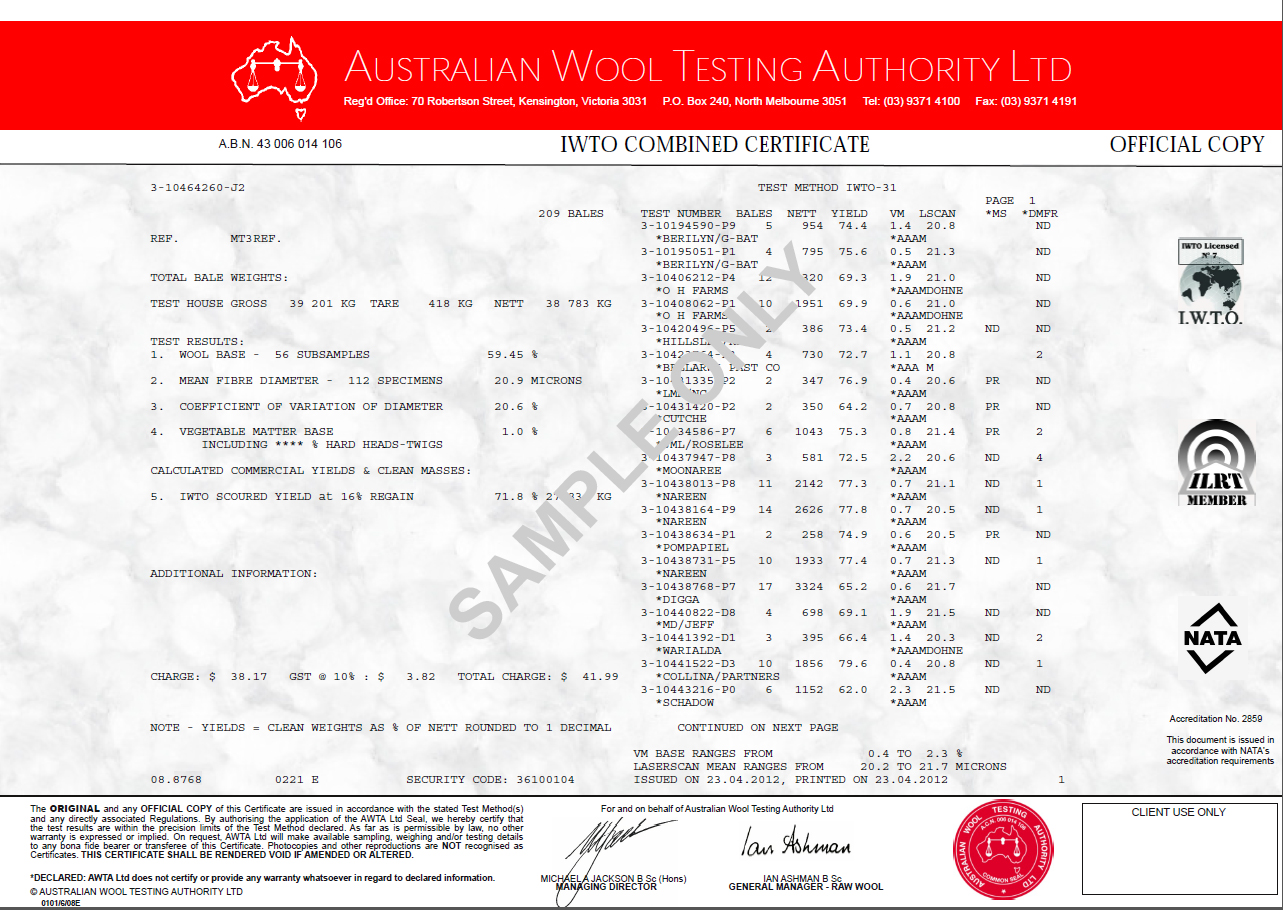
IWTO Combined Certificates & OMLs
Wool Exporters and processors are required by purchasers to provide test certificates that show that a consignment of wool meet the requirments specified in a contract. These documents are also used to authorise payments by banks issuing letters of credit. Consignments often consist of numerous sale lots purchased according to the contract specifications. As it is not cost effective for the individual sale lots to be resampled and measured again as a single test, AWTA provides a service where the tests results of individual sale lots can be arithmetically combined to show the overall average measurements on a single IWTO Combined Certificate. These IWTO Combined Certificates are widely recognised and trusted throughout the wool supply chain. Similarly, the same process can be used to produce Objectively Matched Lots, however the combination of lots is restricted by minimum and maximum measurement ranges.
Combination Calculations
Fact sheets illustrating the procedures defined in IWTO-31 for combining Mean Fibre Diameter, CVD and Fibre Diameter Distributions are available for download. The IWTO-31 standard establishes the combination procedures for all certifiable parameters and other parameters that are provided for information.
These include:
|
 |
Other rules and calculations that govern the creation of Objectively Matched Lots (OMLs) are provided in the Fact sheet below.
Find out more:
Combining Mean Fibre Diameters & CVDs![]()
Objectively Matched Lot Request![]()
Fact Sheet - Objectively Matched Lots
Sample Spreadsheets
The spread sheets provided below show all Combination calculations, as well as the procedure for Combinations by Subtraction. The Combinations by Subtraction spread sheet is used when a small proportion (less than 5% by weight) is removed from a delivery. The removed component is retested and subtracted from the original combination.
Find out more:


